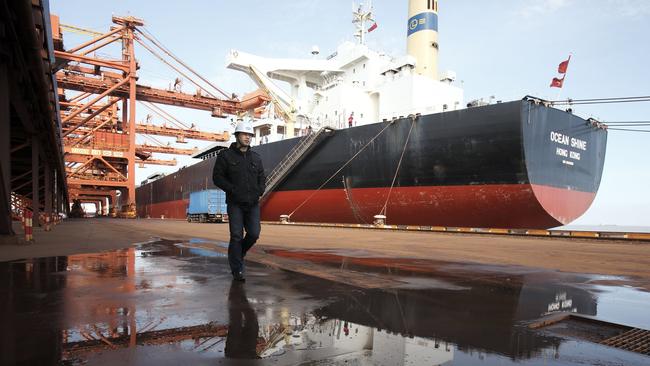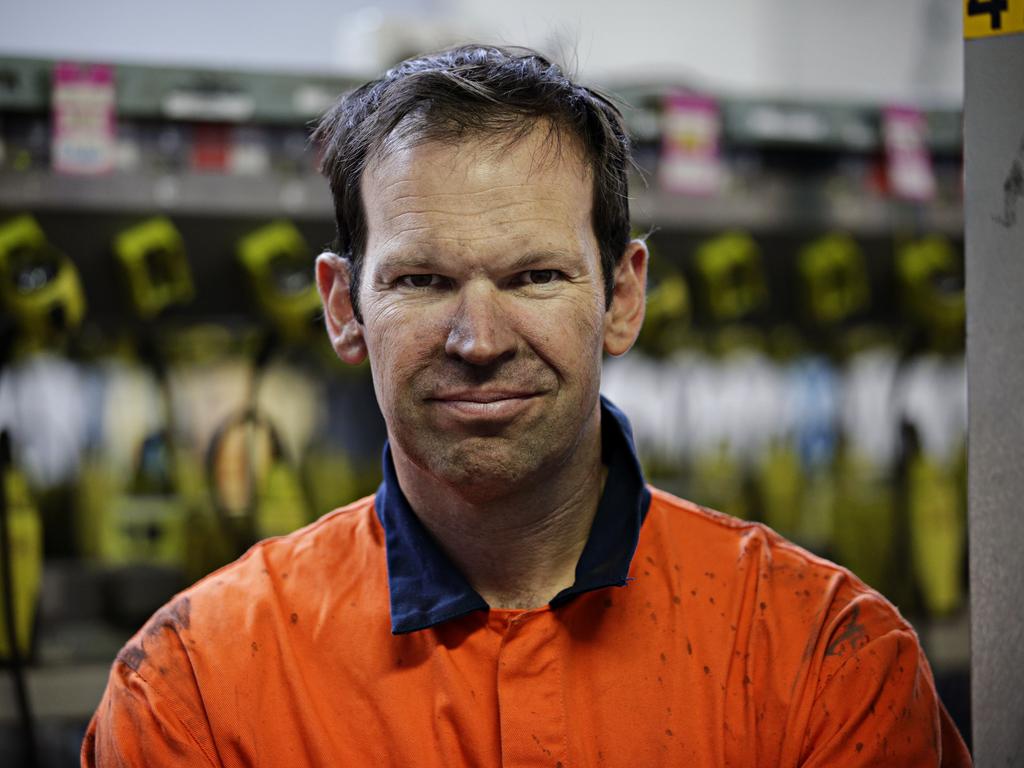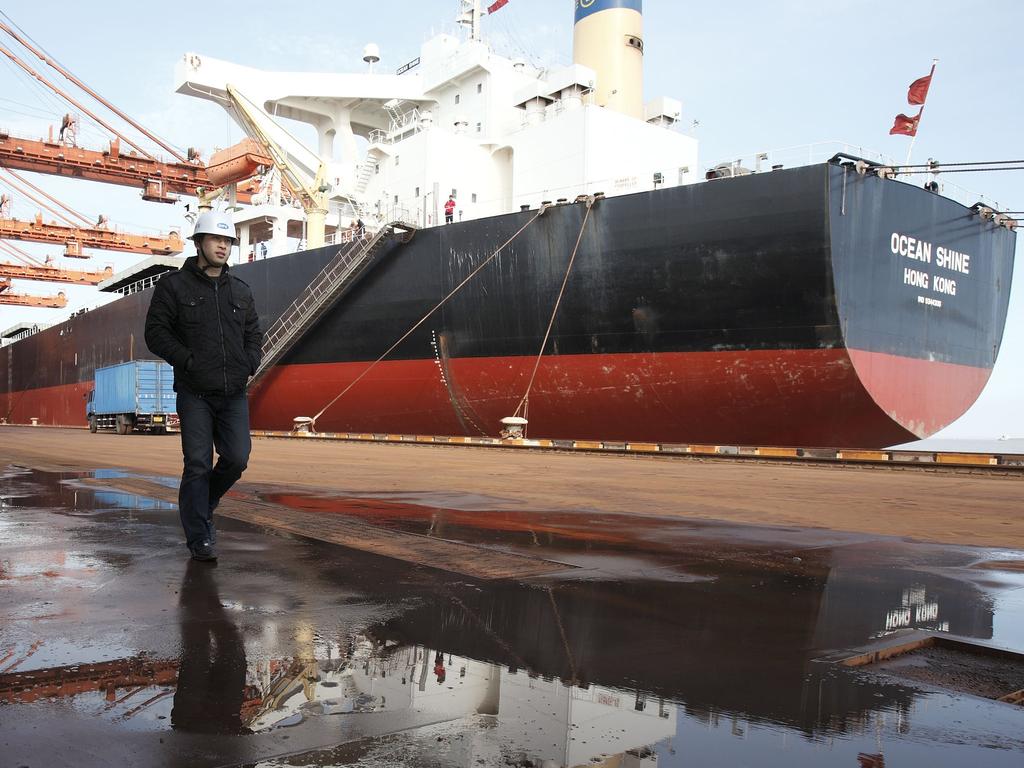
Calls from China’s powerful Iron and Steel Association (CISA), which represents the country’s major steel mills, for the Beijing government to investigate surging iron ore prices are another reminder that Australia’s confidence about the future of even that sector may be misplaced.
The benchmark iron ore spot price of iron ore hit $159.95/tonne on Friday — its highest since 2011.
China’s economy has rebounded at a faster rate than most people had expected while rival iron ore supplier, Brazil, has been struggling, with its workforce hit hard by the pandemic.
Australia exports almost 900 million tonnes of iron ore to China a year, more than 60 per cent of its total imports, a trade worth some $85bn.
Strong iron ore prices have helped to mask the fall in Australia’s exports to China in other sectors including tourism, education, beef and wine, giving Australia a false sense of security about its export picture.
Rising iron ore prices have led to overconfidence in Australia that China has nowhere else to go when it comes to iron ore.
The overconfidence reached its pinnacle on Monday with former resources minister Matt Canavan calling on the federal government to impose a 1 per cent levy on iron ore sales to China, using the money to assist industries such as beef and wine that are suffering from China’s trade actions.
The National Party senator argued that Australia should increase the price of iron ore to China with the levy because China could not easily replace iron ore from Australia.
“To avoid further harm we need to make the Chinese Communist Party pay a price because that will be the only thing that will stop further trade restrictions,” he wrote in The Australian on Monday.
Fortunately the federal government was quick to say that it was not going to take up his suggestion.
Australian iron ore sales to China generate significant revenues which flow into the federal government’s coffers and are used to fund the budget. If they were not already spent elsewhere they could be used to help industries which hit by Chinese trade retaliation.
In the short term it may be that China has nowhere else to go but to buy Australian iron ore, but China plays a very long game with long memories.
Its much publicised Belt and Road Initiative is an exercise in diversifying its imports, reducing its dependence on its east coast and opening up a western front with a new set of Eurasian trading partners.
The call by CISA for Beijing to bring down the price is a reminder there are many other forces that could be brought into play in the Chinese market.
Those with any knowledge of recent history know Australia has been here before, riding skyrocketing iron ore prices which provoke resentment among Chinese buyers and the government.
Australia is developing a McCarthyist attitude towards all things China, with a mixture of legitimate grievances against the increasingly aggressive Xi administration, unnecessary own-goals and clumsy self harm, while our Asian neighbours have played a much more diplomatically sophisticated game.
Australia has done very well economically from its ties with China — with very different interests than the US, which has a longstanding trade deficit with China.
By this year all that has changed.
Barley, beef, wine, timber and coal exports to China have been hit while tourism and tertiary education have been shut down because of COVID travel restrictions.
And now with the iron and steel industry in China calling on its government to intervene to hold prices down, it seems trade on all fronts is under pressure.
Major Chinese steel mills such as China Baowu Steel, Shagang and Ansteel met last week to discuss the situation.
CISA says the surge in iron ore prices is “detached from fundamentals, has exceeded mills’ expectations, and is marked by notable signs of capital speculation”.
Rallying iron ore prices have greatly weakened the domestic steel industry’s competitiveness, it says.
It was domestic pressure from China’s wine, barley and coal industries that led to import restrictions on Australian products.
In a matter of months this year, Australia has somehow managed to turn itself into a convenient whipping boy for China to make a point to other countries about its capacity to retaliate against its critics.
That said, China is doing itself no favours either by clumsy public diplomacy which plays into the hands of its critics.
Diversifying isn’t easy
Looking back 2020 will be a high water mark of globalism with the tide now rushing out fast, replaced by 1930s-style populism and protectionism.
A year ago Australia was still riding high on its $200bn export trade with China with record sales of iron ore, wine, beef and dairy, tourism and education exports.
2021 will be the year of Brexit and further decoupling of the US, Australia and other Western economies from China.
For every high-profile stoush there may be many more going on below the radar.
Several bids by Chinese companies for Australian companies this year have either been publicly rejected or quietly quashed.
One executive at a building products supplier that has traditionally imported from China told this journalist recently that his customers had told him not to source from China any more.
He is now busily looking at sources for product from other Asian countries, wondering what his customers will say when presented with a higher bill from non-Chinese suppliers.
Another longtime Australian-Chinese businessman and trader tells The Australian he is now actively looking elsewhere for investment and export markets despite long years of China connections, convinced that Australia-China ties are in for a long winter of discontent.
Trade tensions with China have been met with glib platitudes from politicians and analysts about the need for diversification — as if those selling wine, beef, dairy, tourism, education and food have not thought of this before and tried other markets with limited success.
The issue is replacing the massive Chinese market with its hundreds of millions of affluent middle class consumers who like Australian products is not easy.
The Asia Society put out a report on Monday focusing on the potential market in Vietnam, a country which has benefited from the global diversification of the supply chain away from China.
But despite its recent growth, Vietnam has a fraction of China’s 1.2 billion people.
Australian companies have been pushing for years to sell more to Indonesia and India but the apparent potential of these markets never eventuates.
The net result will be lower economic growth for Australia for 2021 with temporarily high iron ore prices masking major structural problems and complacency that the pre-COVID good times are just around the corner.








Australia’s $85bn iron ore trade has become the latest export sector facing complaints by domestic interests in China.